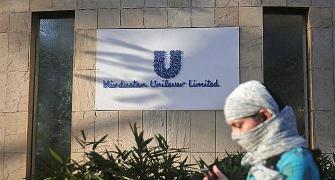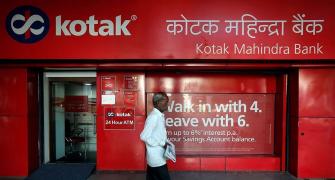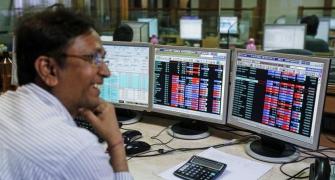 India has to catch up with East Asian regional economic integration, says Sanjaya Baru.
India has to catch up with East Asian regional economic integration, says Sanjaya Baru.
In China, you dial 10+3 for Asia. But this weekend, Australian Prime Minister Kevin Rudd has gathered thinkers from around the world to let China know that the sun rises from Australia too.
Even though US President Barack Obama forgot to mention India in his vision for Asia at Tokyo last month, Japan's Prime Minister Yukio Hatoyama didn't forget doing so in his own vision statement on Asian regional cooperation. Forget about the "great game" to our west, there's a greater game going on to our east.
The east is going red working itself up on what constitutes Asia. China has decided to cut through the clutter and declare the ten member nations of the Association of South-East Asian Nations (Asean) and Japan, Korea and itself as the new East.
Back home, India is just about coming to terms with a free trade agreement (FTA) with Asean and has finalised a poorly heralded FTA with South Korea, but few in the East are taking note. India has to catch up, is a common refrain in these parts as Asean plus Three - China, Japan and Korea - work feverishly to create a new regional financial architecture.
"We should quickly set up a regional monetary fund on the base of Asean+3," says Professor Xu Mingqi of the Institute of World Economy at the Shanghai Academy of Social Sciences.
China is fast consolidating the opportunity created by the global financial crisis and is building on the legacy of the Asian financial crisis of 1997 to make the case for an Asian Monetary Fund (AMF). Dr Xu even wants an Asian Bank for Cooperation and Development. Both proposals being Asian parallels to the International Monetary Fund (IMF) and the World Bank.
When Japan first mooted the idea of an AMF, in the early 1990s, the United States scuttled it. Today China has taken both Japan and Korea on board and is rapidly stitching up support in south-east Asia for a regional financial institution, building on the multilateralised Chiang Mai Initiative (CMIM), which already has a fund of US$120 billion.
In a region where the IMF is still an untouchable, thanks to its rough handling of South Korea, Thailand and Indonesia, the idea of making the CMIM an AMF is gaining traction. Thailand's former finance minister, and former World Bank economist, Chalongphob Sussangkarn warmed up to his Chinese hosts at an Asian Development Bank-sponsored conference in Shanghai last week, repeatedly welcoming the idea of a 10+3 initiative.
While the CMIM retains a link with the IMF, through the existing understanding that only up to 20 per cent of the funds sought by a country can be immediately released while the rest 80 per cent can only be released after IMF approval, the 10+3 are moving ahead with the idea of a regional surveillance mechanism. Singapore hopes to host such an institution.
Apart from the idea of a regional financial institution, the 10+3 are actively engaged in the Asian Bond Markets Initiative and China is busy making the case for an Asian Monetary Unit (AMU).
The AMU proposal is as yet at a nascent stage. Economist Ding Jianping at the Shanghai University of Finance and Economics, trained in Japan and at MIT, proposes that the AMU be defined by a basket of currencies of the 10+3 countries, with predominant weightage given to the Chinese yuan, the Japanese yen, the Korean won and the Singapore dollar.
Professor Ding sees the renminbi's "internationalisation" as a three-step process. First, it will emerge as a common currency of "Greater China", including mainland China, Hong Kong and Taiwan; second, it will become the major component of an Asian currency unit and finally, acquire a global profile.
"The first step towards internationalisation of the Chinese yuan starts in Asia," he says, reminding us of the various currency-swap arrangements China has already established in the wake of the global financial crisis. China has currency-swap arrangements of 650 billion yuan (approximately US$100 billion) with Indonesia, Malaysia, Hong Kong and South Korea. More recently, it has entered into an arrangement with Brazil and others.
In the words of the highly regarded Chinese scholar and economist Zhang Yunling of Beijing's Chinese Academy of Social Sciences, "East Asian Community building is a comprehensive process that includes the institutional building in the economic, political and social areas. For the economic area, the most important progress should be achieved in realizing East Asian FTA and a regional financial architecture, based on further enhancement of Chiang Mai Initiative and toward a regional financial fund."
Clearly, the action has moved from FTAs and investment treaties to financial integration. Chinese scholars made no reference to India, but when asked, each of them said they saw India as a future entrant at a point in time when India felt more confident. "Right now India is not ready to open its markets to China. When India is ready, it can also join" was a common refrain.
It is true that India has taken its time entering into an FTA with Asean and Korea, and will need more time to consider one with China. But even as India grapples with the challenge of an FTA, the action has moved to financial integration.
While India need not get rushed into this process, and has some advantage in keeping its focus on the global financial architecture rather than a regional architecture, it must nevertheless be engaged in regional discussions. For example, Asian central bank governors and their counterparts from Australia and New Zealand meet under the aegis of the Executives' Meeting of East Asia Pacific Central Banks (EMEAP). India is not yet involved in these meetings.
What being left out of all this action clearly points to is that India's "Look East Policy" has to be revitalised. It is ridiculous that India has more diplomats posted in west European capitals than in east Asian ones! India needs deeper and wider engagement with rising Asia across many fields and on more fronts.








